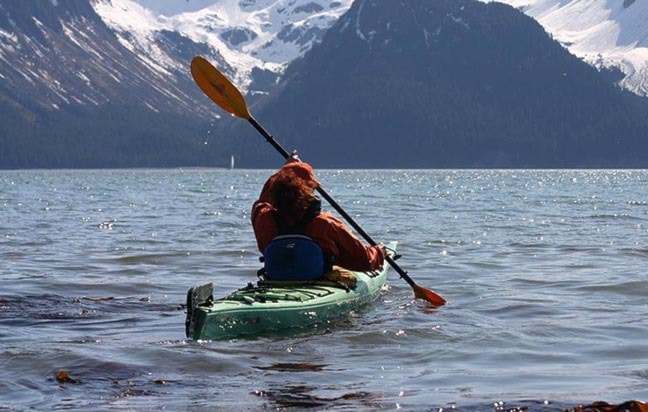Erin Haluschak
Record staff
With two fatal incidents involving kayakers within the past month in the Comox Valley, experts are reminding paddlers of all levels to be prepared when going out on the water.
Doug Taylor, a Courtenay instructor with Paddle Canada, says there are a few basic steps paddlers should consider before taking their boat out - regardless of the season - but should pay extra attention in the cold.
“Dress for the water, not for the weather … the surface inch or two is colder in the winter, but the average water temperature is around nine to 12 degrees,” he notes.
Being close to shore or a strong swimmer are not valid reasons to forgo a personal flotation device (PFD), he adds, and says a classic rule for anyone venturing out in their boat is to know how to get back into a kayak once it capsizes.
He also stresses anyone who wants to go out on the water should have “basic insurance - a basic kayak safety course.”
On Dec. 17, 2016, two friends set out on a kayaking expedition from Union Bay to Tree Island. About one kilometre from shore, a 23-year-old man from Courtenay fell into the water and his body was recovered a day later.
Last week, a man died after his kayak capsized near the Comox Marina; he was wearing a personal flotation device.
Taylor says an important rule of thumb to remember for anyone who decides to go kayaking is the ‘1-10-1’ rule: three critical phases of cold water immersion coined by University of Manitoba professor Dr. Gordon Giesbrecht, otherwise known as Professor Popsicle.
“In the first minute when you capsize, your gasp reflex kicks in when hit with cold water. It’s 500-600 times more powerful than a normal breath. You could inhale sea water and you have about one minute to calm your breathing down. You need to have your head above water. If you don’t have a lifejacket on, you could be floundering in water,” explains Taylor.
With street clothes, people have around 10 minutes before they lose movement in fingers, arms and legs. Self-rescue is critical at this stage, Taylor adds.
In general (depending on the size of the person), people have about one hour to get into dry clothing before hypothermia begins to set in.
Taylor says a key factor in helping prolong the effects of the weather is thermal protection, in particular, a drysuit.
“It is the ultimate; we actually wear it year-round,” he notes, and encourages paddlers if they don’t have a drysuit, to wear layers.
Without thermal protection, a person can lose body heat 25 times faster in water than in air with similar temperatures. That number can be increased by a factor of 10 with movement like swimming or moving water.
According to the Canadian Red Cross, there are 166 deaths each year from boating-related incidents; wearing a lifejacket could eliminate up to 90 per cent of all boating-related drownings.
Paul Berry, information officer/manager for Comox Valley Search and Rescue, says another important factor to remember in winter kayaking is checking the weather.
“Conditions exist in the weather which are much more severe in the winter months; even the spray can chill a body even more.”
He adds paddling alone is not recommended, and encourages paddlers to take essentials with them - such as layers, a strobe light (especially for night kayaking) and even a beacon to aid in a search if necessary.
While the types of kayaks generally don’t differ for summer and winter months, Taylor notes a critical part of a kayak is its flotation chambers.
“It has to float when it’s overturned … most kayaks have watertight chambers in the front and the back - it’s the biggest lifejacket in sight.”
While many kayaks on the market are safe and stable, Taylor warns some recreational boats have minimal flotations when they capsize, and says it’s good practice to purchase a kayak from a reputable dealer.
As part of National Paddling Week in June, the local Paddle Canada chapter is hosting its annual safety event at Goose Spit. It is a free clinic to teach the basis rescue skills, and kayaks, wetsuits, instruction and handouts are included.
For more information or to register, visit Comox Valley Kayaks on Cliffe Avenue in Courtenay.
